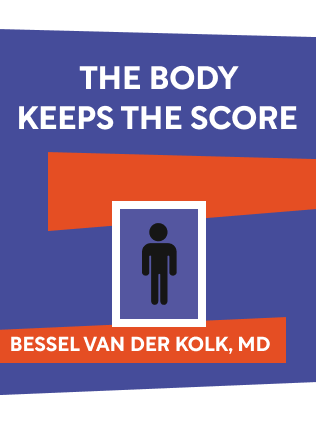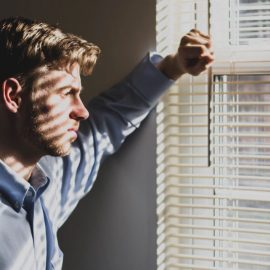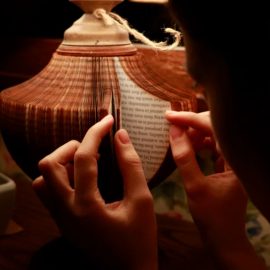

This article is an excerpt from the Shortform book guide to "The Body Keeps The Score" by Bessel van der Kolk. Shortform has the world's best summaries and analyses of books you should be reading.
Like this article? Sign up for a free trial here .
What are Bessel van der Kolk’s trauma theories? What does van der Kolk suggest will help heal trauma?
One of van der Kolk’s trauma treatments is participating in theater or acting. He theorizes that the elements of acting can be immensely beneficial to helping people deal with trauma.
Read more about van der Kolk, trauma, and how experiences in theater and acting can help people heal.
Van der Kolk’s Trauma Treatment: Engaging in Communal Rhythms
Theater targets many of the things trauma survivors struggle with most, which can make it an incredibly therapeutic experience. Van der Kolk’s trauma treatment suggestions include incorporating theater.
First, it gives patients a chance to escape from the ailments, circumstances, and feelings they face consistently and to embody a different character — someone strong, resilient, and confident. But in order to do that, they must work through many of the challenges that come with trauma, such as getting in touch with emotions, exploring conflicts between characters, and exposing vulnerability. These are some of the hardest things for trauma sufferers to do, but are essential to acting.
Second, actors must be in full control of their bodies and their physical expressions. Even standing up straight and projecting their voices through the theater can be a major challenge to trauma sufferers, whose inclinations are typically to try to be invisible. Feeling that you have full control and ownership of your body is key to having a sense of agency, a necessary aspect of healing for trauma survivors.
Third, it makes patients a valuable, contributing member of a community (in this case, the theater group), which helps them regain a sense of worth and competence. Competence is a powerful antidote to the helplessness that trauma instills.
Additionally, beyond simply being a part of the community, theater and music create a communal rhythm and synchronization. From religious hymns to protest chants, communal singing and movement gives you a sense of strength, hope, and a visceral feeling of being part of something bigger than yourself. According to van der Kolk, trauma can in part be healed by these physical sensations.
Being part of that community requires that you trust the other members of that community, and in yourself — both huge challenges to trauma survivors. Actors must trust in each other to perform convincing scenes, and must trust in themselves to commit to their character and lines, revealing their vulnerability in front of an audience.
How We Can Help People With Trauma
According to van der Kolk, trauma is everywhere. Awareness of trauma and its effects is steadily increasing, as more research is published and more treatments become available. However, there is much room for change in the way our society addresses and prevents trauma.
Unemployment, poverty, struggling schools, inadequate housing, social isolation, and relatively easy access to firearms all create fertile grounds for trauma — and still, we see cuts to food stamps, opposition to universal healthcare and stricter gun laws, high rates of incarceration, and overreliance on medications is psychiatry.
Schools are a natural place to make improvements in order to help address and prevent the next generation of trauma. The author recommends several changes that can help children who are exposed to trauma at home and in their communities.
- Don’t cut music and art classes, physical education, recess, dance, theater, and other creative outlets that are engaging and often therapeutic.
- Give everyone access to high-quality daycare and preschools that teach children the foundations of self-regulation, interpersonal relationships, persistence, and concentration.
- Give teachers and school employees training on how to recognize and work with traumatized students.
- Instead of reprimanding or punishing students for outbursts, create a safe environment where they can calm down, explain what upset them, and explore possible solutions.
- Make emotional intelligence part of the curriculum: Teach students how to be self-aware, recognize and identify their emotions, communicate their thoughts and feelings to others, and read others’ emotions through body language.
Acting is one of Bessel van der Kolk’s trauma treatment theories, based on the unique experiences that theater and acting can provide. There are also additional treatment options discussed in his book, The Body Keeps the Score.

———End of Preview———
Like what you just read? Read the rest of the world's best book summary and analysis of Bessel van der Kolk's "The Body Keeps The Score" at Shortform .
Here's what you'll find in our full The Body Keeps The Score summary :
- How your past trauma might change your brain and body
- What you can do to help your brain and body heal
- Why some trauma survivors can't recognize themselves in the mirror






